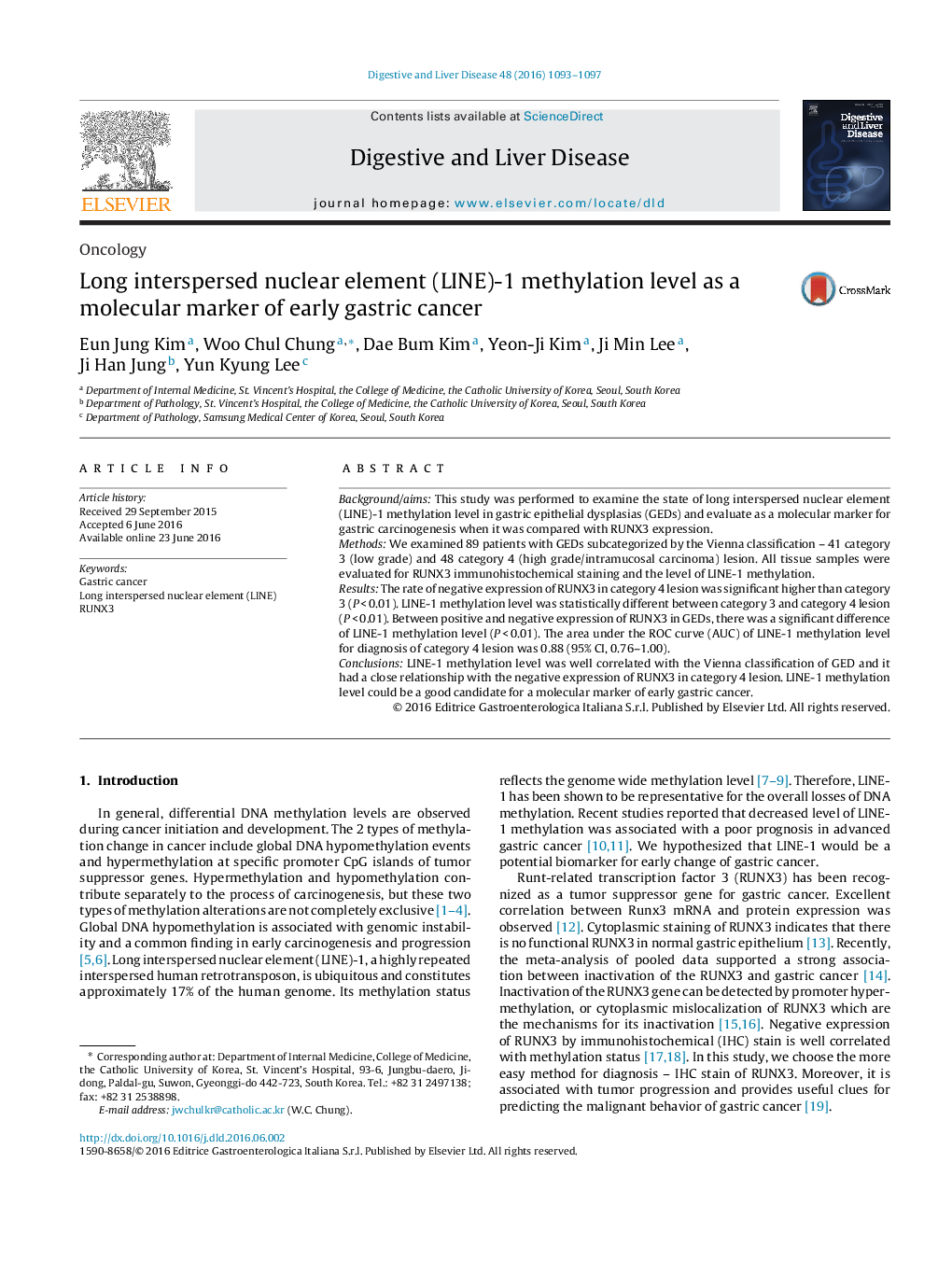| Article ID | Journal | Published Year | Pages | File Type |
|---|---|---|---|---|
| 3261196 | Digestive and Liver Disease | 2016 | 5 Pages |
Background/aimsThis study was performed to examine the state of long interspersed nuclear element (LINE)-1 methylation level in gastric epithelial dysplasias (GEDs) and evaluate as a molecular marker for gastric carcinogenesis when it was compared with RUNX3 expression.MethodsWe examined 89 patients with GEDs subcategorized by the Vienna classification – 41 category 3 (low grade) and 48 category 4 (high grade/intramucosal carcinoma) lesion. All tissue samples were evaluated for RUNX3 immunohistochemical staining and the level of LINE-1 methylation.ResultsThe rate of negative expression of RUNX3 in category 4 lesion was significant higher than category 3 (P < 0.01). LINE-1 methylation level was statistically different between category 3 and category 4 lesion (P < 0.01). Between positive and negative expression of RUNX3 in GEDs, there was a significant difference of LINE-1 methylation level (P < 0.01). The area under the ROC curve (AUC) of LINE-1 methylation level for diagnosis of category 4 lesion was 0.88 (95% CI, 0.76–1.00).ConclusionsLINE-1 methylation level was well correlated with the Vienna classification of GED and it had a close relationship with the negative expression of RUNX3 in category 4 lesion. LINE-1 methylation level could be a good candidate for a molecular marker of early gastric cancer.
